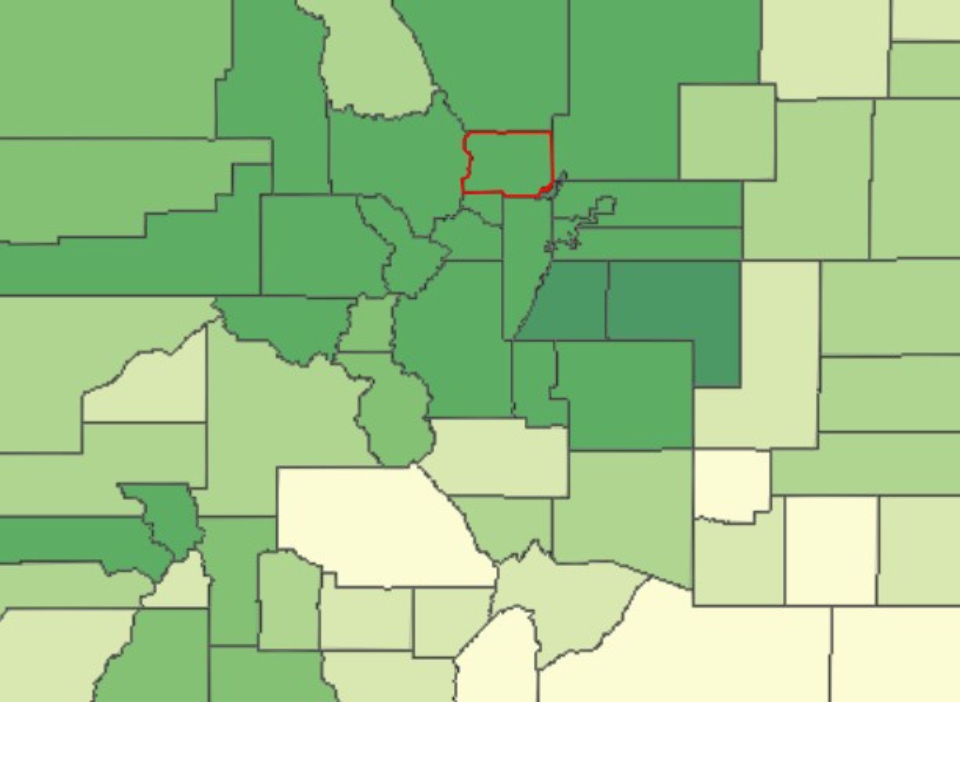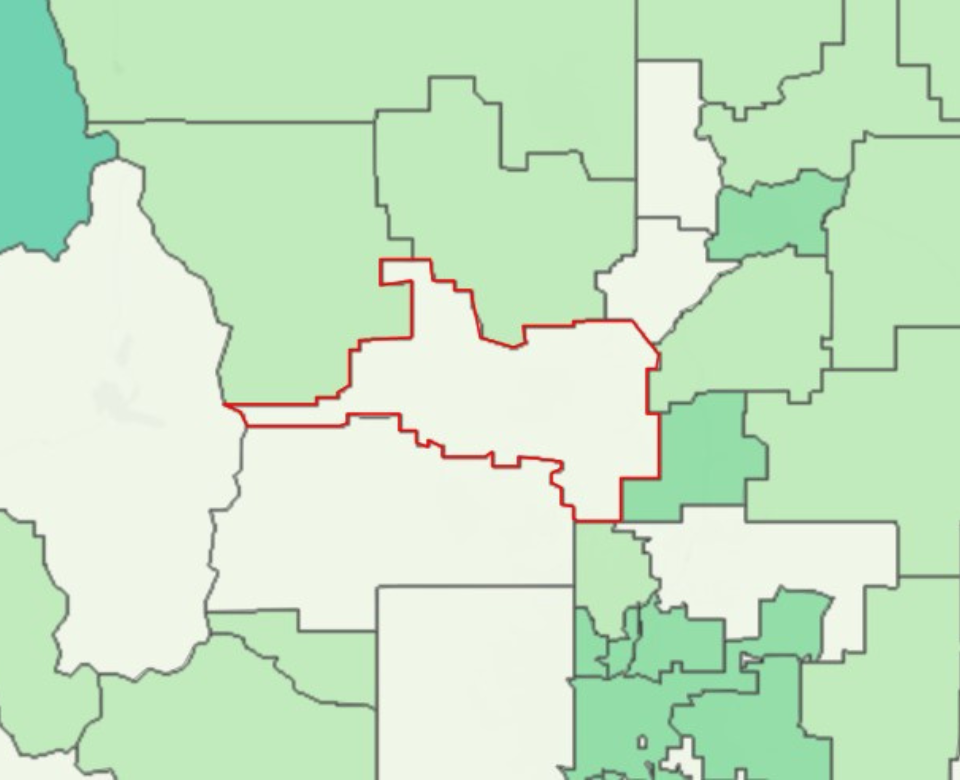The poverty rate among students who attend St. Vrain Valley Schools increased in 2021, according to statistics released Thursday by the U.S. Census Bureau.
The district’s student poverty rate estimate increased from 6.1% in 2020 to 7.5% in 2021, according to the report. The national average for all school districts in 2021 was 14.5%.
“Our approach to equity is to really ensure that we are providing access to high-level programming for our students,” said Diane Lauer, St. Vrain Valley’s assistant superintendent of priority programs and academic support. “We are constantly looking at ways where we can ensure that students — all students — are learning at high levels.”
The district also works hard to ensure all students can access its programs, Lauer said.
“Everything from universal preschool — before universal preschool was even invented in Colorado — all the way to rigorous coursework like our advanced placement, and our concurrent enrollment courses,” she said.
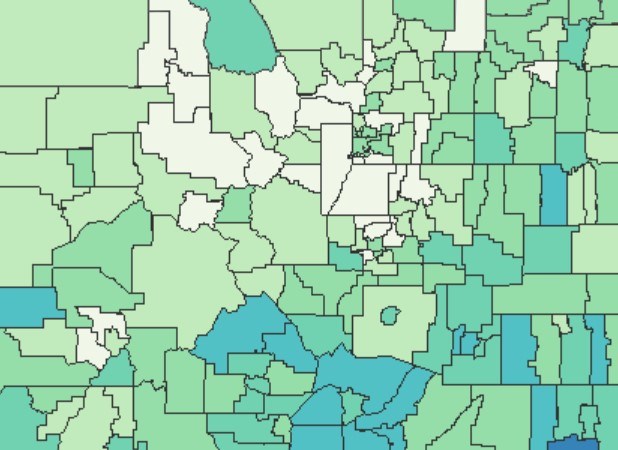
This bureau data on school district poverty rates is used to allocate federal funding under Title I of the Elementary and Secondary Education Act. School districts receive the funds according to their number and percentage of low-income children.
The U.S. Department of Education will use the 2021 estimates to calculate how much funding school districts will receive in the 2023-2024 school year.
“Seven schools in St. Vrain Valley Schools are Title I schools based on school poverty rates,” the district’s website reads. “They are as follows: Columbine, Indian Peaks, Longs Peak, Mountain View, Northridge, Rocky Mountain, and Timberline K-8 School.
“Even though the amount of Title I funds a school and district may receive is based on poverty rates, the children that benefit from the program(s) are not, necessarily, just students of poverty. Rather, Title I programs work to address the needs of a school’s lowest performing students and those students found to be at most risk for not meeting state academic standards.”
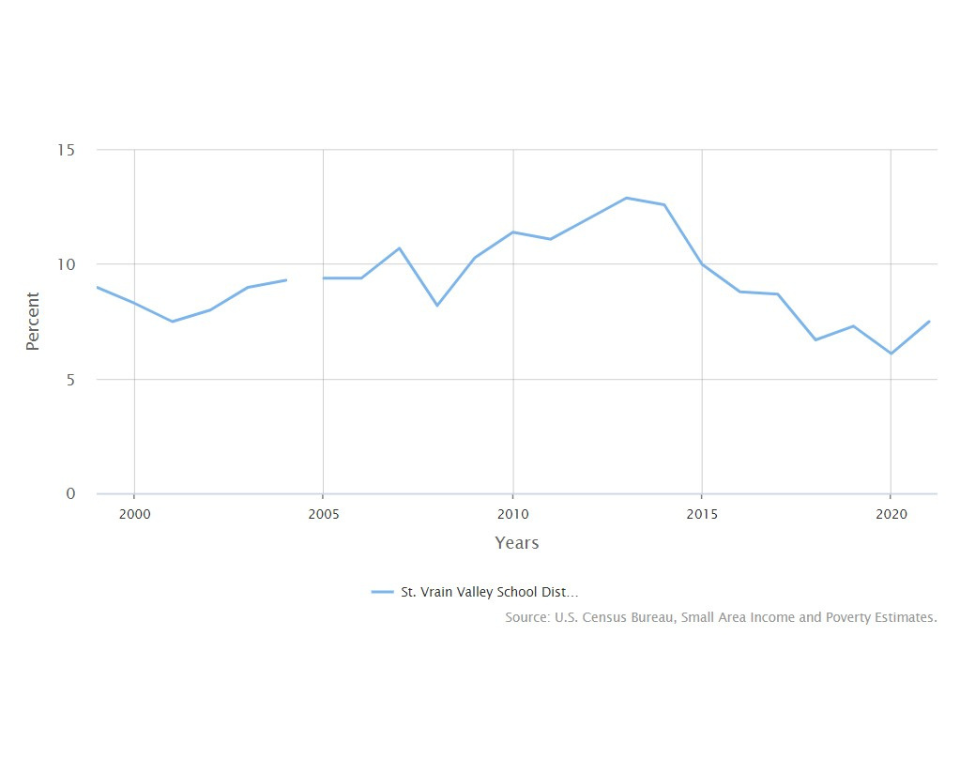
The statistics were released from the U.S. Census Bureau’s Small Area Income and Poverty Estimates program, which published data for school districts, states and counties.
Boulder County’s poverty rate went from 9.5% in 2020 to 10.7% in 2021, the data shows. Those numbers are slightly lower than the Colorado estimates, which went from 9.8% in 2020 to 10.9% in 2021.
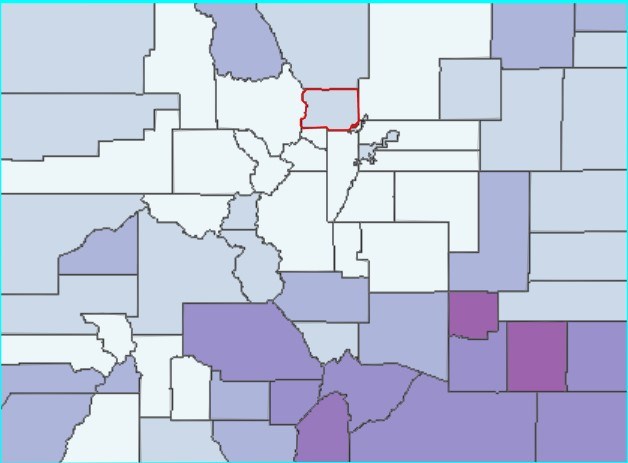
Despite the poverty rate increasing, Boulder County’s median household income rose from $88,289 in 2020 to $90,327 in 2021, according to the data.
Median household income in Weld County:
- 2020: $77,937
- 2021: $84,826
Median household income in Colorado:
- 2020: $77,688
- 2021: $82,228
